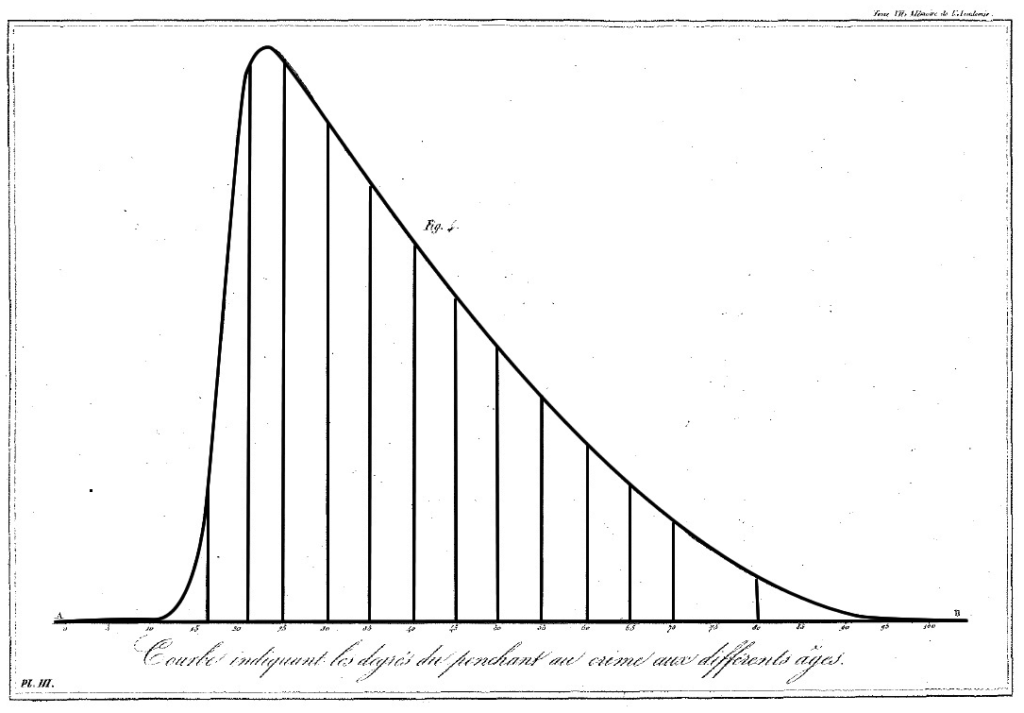Some of the biggest “Ah Hah!!!” moments I have ever experienced have come out of my attempts to solve the age crime curve puzzle. The age crime curve puzzle was discovered by Adolphe Quetelet after he began analyzing crime rates in France in the late 1820s and early 1830s. The crime rate data he had access to were some of the first systematic examinations of crime rates. While he was plotting the crime rates by age, as shown below, he noticed a peculiar pattern. Crime rose from zero with infants, climbed to a peak in young adulthood, and then dropped again until few people in their 60s were committing crimes. This pattern became known as the age crime curve.

The causes of the age crime curve have been a puzzle for criminologists. Hirschi and Gottfredson (1983) reviewed the literature on the age crime curve and noted that the age distribution of crime “easily qualifies as the most difficult fact in the field” (p. 552).
My proposed solution to the Age Crime Curve puzzle can be found here.
References
- Hirschi, Travis, & Gottfredson, Michael (1983). Age and the explanation of crime. American journal of sociology, 89(3): 552-584.
- Quetelet, Adolphe (1831). Recherches sur Ie penchant au crime aux differens ages. Brussels: M. Hayez.
- Quetelet, Adolphe (1833/1984). Research on the Propensity for Crime at Different Ages. Translated and introduced by Sawyer F. Sylvester. Cincinnati: Anderson.